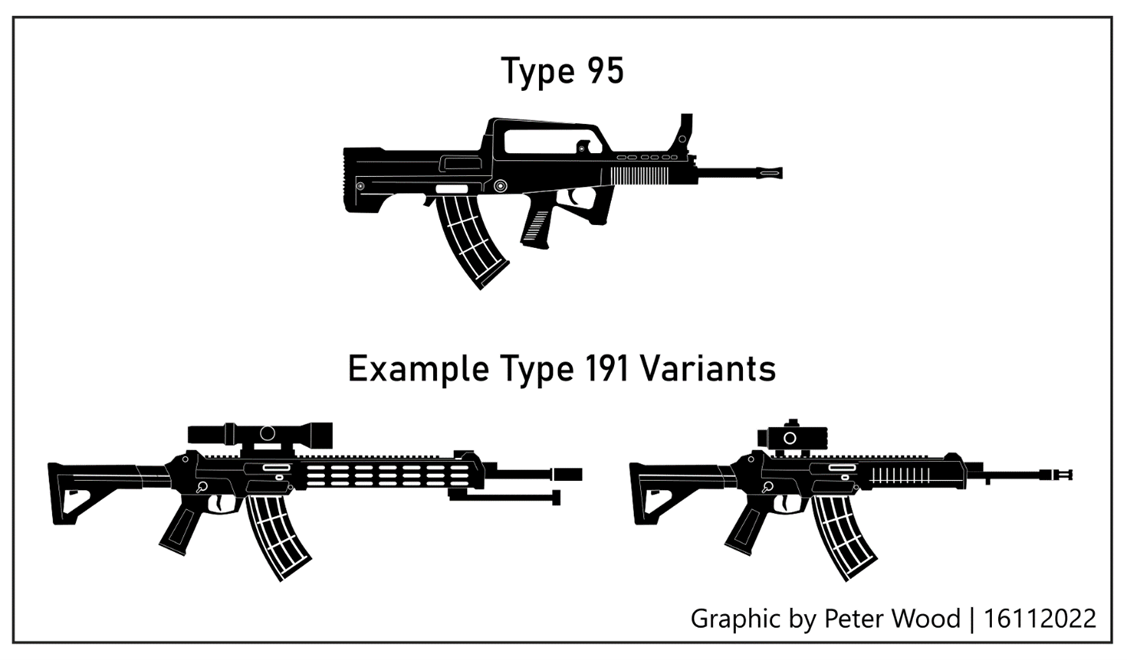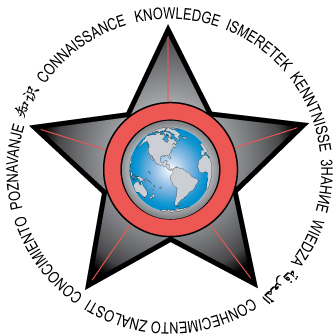
Chinese Small Arms.
“Compared to the previous Type-95 series of rifles, the Type-20 series are lightweight and more portable. A major technological breakthrough for the new rifles is improvements in reliability and service life.”
Several examples of China’s new series of small arms were recently shown at the Zhuhai airshow. Formally known as the China International Aviation & Aerospace Exhibition, the event is held every two years and includes displays of a wide range of new equipment. While most weapons are meant primarily for export, the expo also showcases equipment that has been adopted by the People’s Liberation Army (PLA). The following excerpt from Chinese state media describes a new series of small arms developed by China Ordnance Equipment Group Corporation[i] known as the “Type 20 New Weapon Series.”[ii]
In 2019, China showed troops equipped with a new battle rifle, the Type 191,[iii] during the military parade that was part of celebrations of the 70th founding of the People’s Republic of China. New camouflage uniforms were also shown for the first time.[iv] Since then, Chinese media reporting has shown more units being equipped with the new rifles and wearing the new camouflage. As highlighted by Zhang Lu in the excerpt, the Type 20 weapons feature improvements in their lifespan and reliability. The rifles use M-LOK and Picatinny rail systems to allow easy modification and use of accessories, including grips, lasers, and optics. When the Type 191 was initially introduced, it appeared with an optic using a loop of fiberoptic to provide illumination of the reticle without the need for batteries. Since then, numerous other optics have appeared in use, and images from the expo showed a wide variety of thermal and low-light optics. Other weapons belonging to the Type 20 series have appeared in other Chinese media reporting, including new dedicated marksman rifles, sniper rifles, and the Type 201 5.8mm Squad Machine Gun, a replacement for the Type 95-derived squad support weapon (QBB-95[RG1] ).[v] This new machine gun gives up the bull-pup design and drum magazine of the QBB-95 for a traditional belt-fed design. Other parts of the Type 20 series include a 9mm submachine gun with an extendable stock and holographic sight and a new handgun. While the new weapons will take some time to be fielded across the force, these minor improvements are important to increasing the combat power of Chinese military units and will help make them more effective in a variety of scenarios.
Source:
“‘硬核’的中国制造!20式新枪族 ‘组团’ 亮相 (“Hard core” made in China! The parts of the Type-20 series of weapons have appeared),” China Central Television [央视网] (PRC State Media), 8 November 2022. http://news.jstv.com/a/20221108/1667855745474.shtml
The 14th China Air Show began on 8 November. The new Type 20 series of firearms which was independently developed by China, made a “Group” appearance.
According to Zhang Lu [张路], Assistant to the General Manager of Chongqing Construction Industry [重庆建设工业](a subsidiary of China Ordnance Equipment Group Corporation, developer of the weapons), “The Type 20 series have high reliability, and easy adaptability to the needs of global combat environments.”
Compared to the previous Type-95 series of rifles, the Type-20 series are lightweight and more portable. A major technological breakthrough for the new rifles is improvements in reliability and service life. In the past, a gun could only fire 5,000-10,000 rounds. The Type 20 series doubles this service life.
The largest group within the Type 20 series is the new generation of 5.8mm rifles which include standard battle rifles, carbines, and three precision variants.
Compared with the Type-95 series and the Type 20 series various optics can be used making them suitable for different combat requirements. The series also adopts a transparent magazine for rifles to make it clearer how many rounds remain.
Notes:
[i] China Ordnance Equipment Group Corporation [中国兵器装备集团有限公司].
[ii] Type 20 New Weapon Series [20式新枪族].
[iii] For greater detail regarding the new rifle see: Peter Wood, “China Introduces New Battle Rifle for the PLA,” OE Watch, December 2019.
https://community.apan.org/wg/tradoc-g2/fmso/m/oe-watch-articles-2-singular-format/342827
[iv] For more details regarding the camouflage types see: Peter Wood, “PLA Adopts New Digital Camouflage for All Services,” OE Watch, May 2020.
https://community.apan.org/wg/tradoc-g2/fmso/m/oe-watch-articles-2-singular-format/360519
[v] For background regarding China’s previous squad support weapons see: Peter Wood, “Why the PLA Adopted the Type 95 Light Support Weapon,” OE Watch, May 2020.
https://community.apan.org/wg/tradoc-g2/fmso/m/oe-watch-articles-2-singular-format/362528
Image Information:
Image: Chinese Small Arms.
Source: Created by Author
Attribution: Image by Peter Wood





